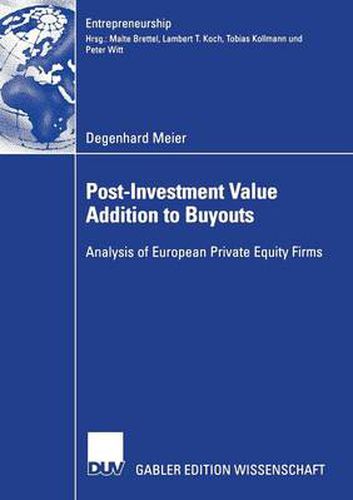Readings Newsletter
Become a Readings Member to make your shopping experience even easier.
Sign in or sign up for free!
You’re not far away from qualifying for FREE standard shipping within Australia
You’ve qualified for FREE standard shipping within Australia
The cart is loading…






This title is printed to order. This book may have been self-published. If so, we cannot guarantee the quality of the content. In the main most books will have gone through the editing process however some may not. We therefore suggest that you be aware of this before ordering this book. If in doubt check either the author or publisher’s details as we are unable to accept any returns unless they are faulty. Please contact us if you have any questions.
Degenhard Meier explores the dimensions of post-investment value addition characterizing the interaction between private equity firms and their portfolio companies and derives plausible hypotheses which he tests in an innovative way, i.e. he takes the current discussion on alternative methods to structural equation modeling as a basis and develops this discussion further by shedding light on partial least squares - a variance-based approach to structural equation modeling.
$9.00 standard shipping within Australia
FREE standard shipping within Australia for orders over $100.00
Express & International shipping calculated at checkout
This title is printed to order. This book may have been self-published. If so, we cannot guarantee the quality of the content. In the main most books will have gone through the editing process however some may not. We therefore suggest that you be aware of this before ordering this book. If in doubt check either the author or publisher’s details as we are unable to accept any returns unless they are faulty. Please contact us if you have any questions.
Degenhard Meier explores the dimensions of post-investment value addition characterizing the interaction between private equity firms and their portfolio companies and derives plausible hypotheses which he tests in an innovative way, i.e. he takes the current discussion on alternative methods to structural equation modeling as a basis and develops this discussion further by shedding light on partial least squares - a variance-based approach to structural equation modeling.